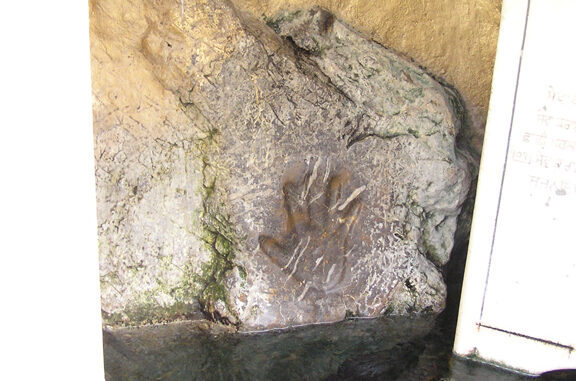
By I.S. Saluja
Sometime between the year 1510 and 1520, just before the Mughal rule began in India, Guru Nanak is said to have traveled to the Arab lands visiting, among other places, Mecca and Baghdad. He was in his 40s then. Some say he even performed the hajj, but there is no conclusive evidence to support that claim. On the way back from his sojourn in the Arab lands, Guru Nanak passed through Kabul and Peshawar and halted at a small hamlet, the present-day Hasan Abdal, at the foot of a steep hill.
Attracted by his simple lifestyle and engaging conversation, many people from the village, both Hindus and Muslims, started flocking to Guru Nanak. As the word about him spread, the number of devotees increased.
It so happened that there also lived a Muslim saint, Baba Wali Kandhari, at the summit of the hill above the hamlet. His last name suggests his origins in Kandhar, Afghanistan. Other than having a vantage point from where he could see all that was happening in the village below, Baba Kandhari also had the benefit of having a freshwater spring at the summit, which also flowed down the hill to the village. From the hilltop, Baba Kandhari could see the people flocking to Guru Nanak. He felt a pang of jealousy, which soon turned into outright resentment against the new saint on the block. If he couldn’t stem the flow of Guru Nanak’s devotees, Baba Kandhari thought, he could perhaps drive the Guru away from the area by stopping the flow of water to the village down below. And stop the water he did. Guru Nanak took this development calmly, but the villagers were greatly upset over the cutting off of their water supply. They sent a delegation to Baba Kandhari beseeching him to let the water flow, but the Baba was not moved. He sent the delegation back taunting them to ask their guru to divine water for them. The villagers turned to Guru Nanak, who asked his lifelong disciple and companion, Bhai Mardana, a Muslim, to go to Baba Kandhari and plead with him the case of the villagers. But the Baba did not relent. Guru Nanak sent Bhai Mardana again, and yet again, to beg the Baba for water, but to no effect.
Not knowing what to do, the desperate villagers approached Guru Nanak once again for advice. As the story goes, Guru Nanak told them not to despair. Pointing to a rock embedded in the ground, he asked them to dislodge it. When they pushed the rock aside, freshwater gushed forth from the ground, enough for the needs of the little village, and some more.
Baba Kandhari was dismayed at this development. But his dismay turned into red hot anger when he discovered that his own spring had meanwhile dried, the water having been sucked by the spring below. Enough was enough, he told himself and decided to get rid of the Guru. One day, when Guru Nanak was sitting, as usual, surrounded by his devotees, Baba Kandhari pushed a huge boulder down the hill in the direction of the Guru. The boulder rolled down, gaining speed and kicking up dust. When the devotees sitting around the Guru heard the rumble and saw the boulder hurtling down in their direction, they fled in panic. But Guru Nanak continued sitting calmly where he was. When the boulder came close, and it seemed it would surely crush him, Guru Nanak raised his right hand as if ordering the rock to stop. The boulder pushed against Guru Nanak’s hand — and stopped! The Guru’s palm sank into the boulder as if into soft wax, leaving a deep imprint on it. Upon seeing the miracle, not only the faith of the villagers was reinforced in their saint, but it also convinced Baba Kandhari of the spiritual reach of Guru Nanak. According to one version of the story, Baba Kandhari came down from the hilltop, touched Guru Nanak’s feet, and also joined the Guru’s devotees. Another version says both saints became friends and lived happily thereafter, tending independently to their respective flocks.
Today, the rock with a clearly visible hand imprint is embedded in the concrete structure of the building complex of Panja Sahib. Clear fresh water gushing out from somewhere in the ground cascades down the face of the rock, washing the hand imprint, into a very large pool. Next to the pool, on an elevated platform, stands a beautiful gurdwara, built in the Mughal style by Maharaja Ranjeet Singh (1780-1839). The gurdwara houses the Granth Sahib – the holy book of Sikhs.
(Excerpts from an article by Aziz Ahmad. Source: Internet)
PANJA SAHIB IN PICTURES
Ace photographer Jay Mandalhas visited Panja Sahib a couple of times and took plenty of lovely photographs. He has selected some for the readers of The Indian Panorama which we are glad to reproduce here in this special edition commemorating Guru Nanak Dev Ji’s 552nd Birth Anniversary. The shrine is considered to be particularly important as the handprint of the founder of Sikhism, Guru Nanak, is believed to be imprinted on a boulder at the Gurdwara.
(Text and Photos : Jay Mandal-On Assignment)




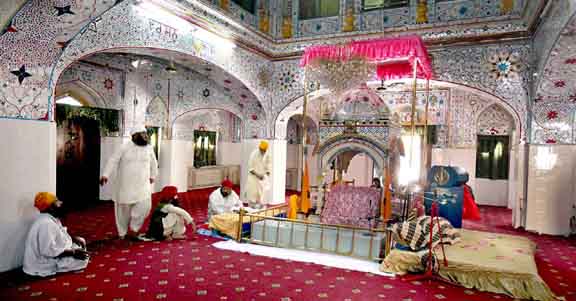
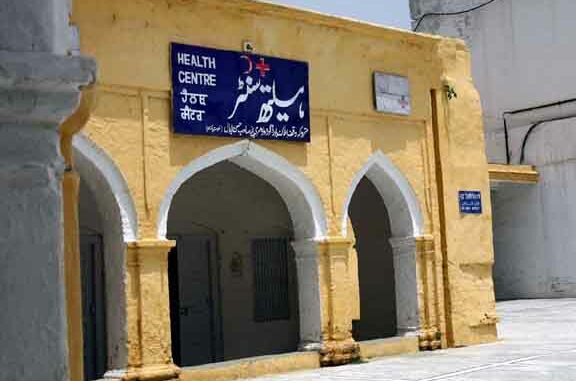


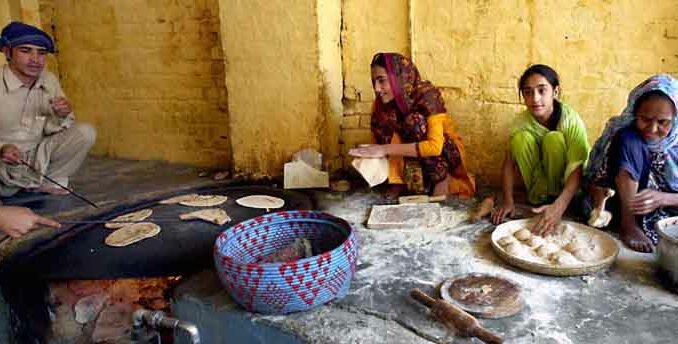




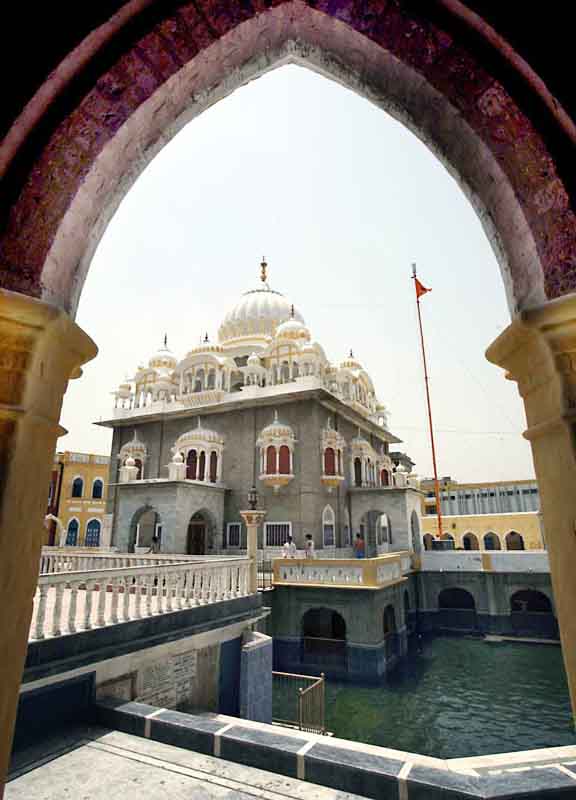

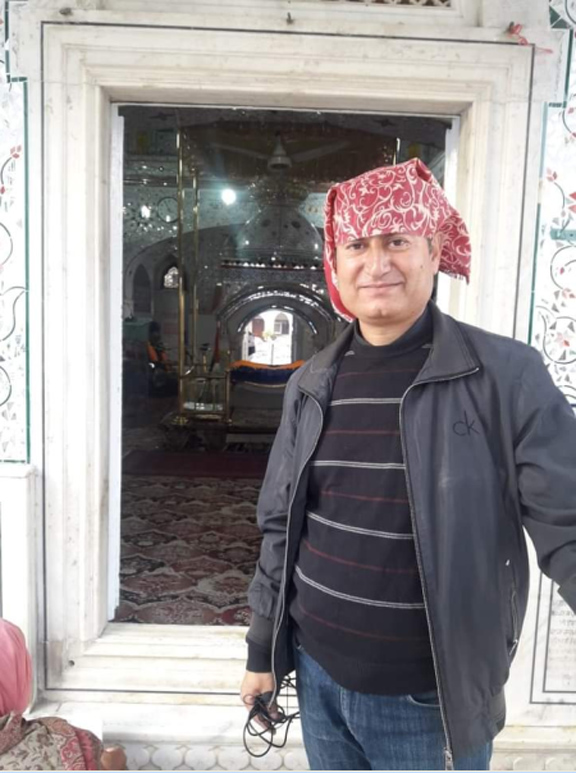





Be the first to comment